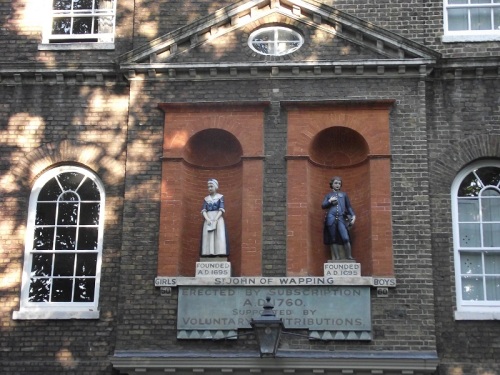Today marks the 75th anniversary of an extraordinary event in London’s history: the Battle of Cable Street.
On 4 October 1936, the British Union of Fascists planned a march down Cable Street in Shadwell, an impoverished part of London’s East End. The area has been home to refugees and migrants for hundreds of years. In the 1930s, many Jewish families who had fled Europe had settled in the area.
Hundreds of thousands of anti-fascists turned up and created roadblocks, determined not to let the fascists march through their neighborhoods. The police clashed with the anti-fascists until a street battle broke out.
That day, Londoners stood up for some of the poorest and most persecuted people of their time. They risked their lives to show that hatred and racism would not be tolerated.
There’s now a beautiful mural commemorating the event.

London’s East End is still a beautifully diverse mix of cultures that have left their stamp on the area’s history. I’ve lived here for over six years, and since I’m leaving the country soon I’m feeling nostalgic.
Historical romance readers will be familiar with my part of London. It’s portrayed as the area where criminals and doxies lived. Where heroes went for a pint in seedy public houses before being coshed on the head and press-ganged onto ships.
But to me it’s always been the city’s most diverse and welcoming area, with an incredible array of markets:


And a flourishing Sunday flower market on Columbia Road (listen to them hock the flowers to the punters)
They’re obviously irresistible.

Brick Lane is lined with curry restaurants and fabric shops for all your sari needs.
And even though my part of London, Wapping, features as the sleaziest part of historic London in many novels, I prefer to think of it as the area where Britain’s sense of charity was born.

What place are you familiar with that you wish featured more accurately in fiction?



Awesome post, Katrina! I’ve been to London several times, but I’ve never made it to the East End. And I have to admit that I *just* wrote a first draft of a Regency scene with the stereotypical crime-infested East End. Thanks to your post, I’ll be sure to revise on the next draft 🙂
Thanks, Sara! Glad to introduce you to a new side of the East End. I’m sure it probably was pretty awful back then, but it also was a haven for many people fleeing persecution, and they’ve all left their mark.
Hope you make it to this side of London one day!
I can’t think of a single place, but hopefully will be able to revisit this post with a different answer later!